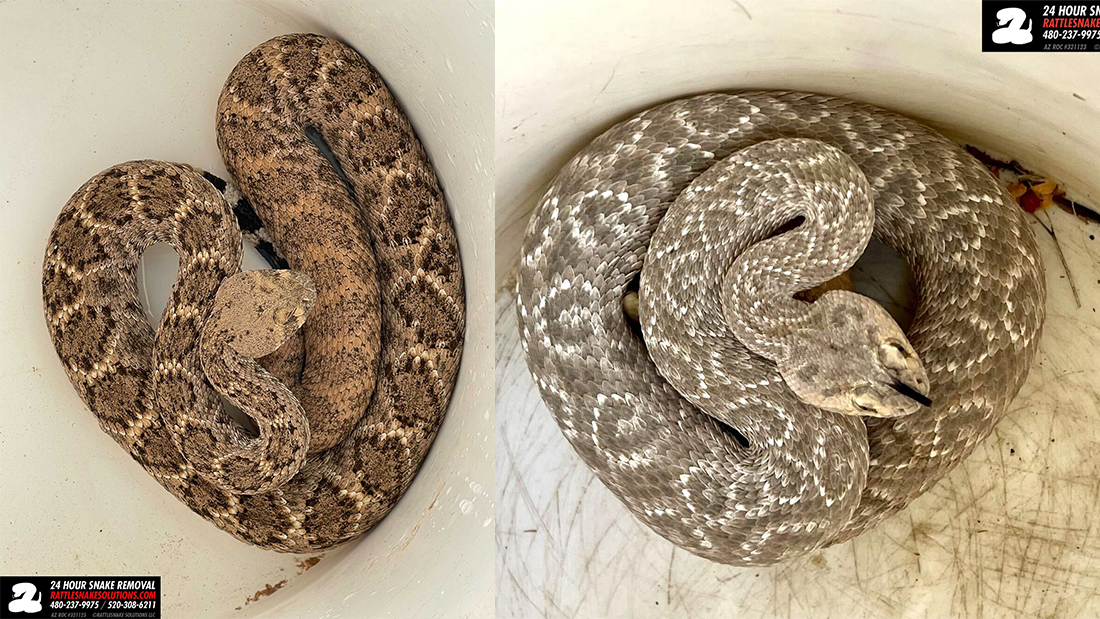Welcome back to the world of differently colored animals. From 1-in-100,000 coloring found on an elk, to gorgeous white stingarees floating along the seafloor, the animal world can sure throw a spanner in the works when it comes to “typical” coloration. Now the latest creature to join the party is a diamondback rattlesnake, without the diamonds.
The team at Rattlesnake Solutions were called to a backyard in Scottsdale, Arizona to remove a snake, but were surprised to discover an individual unlike any they’d seen before.
Western diamondback rattlesnakes are a large species of pit viper that can grow to 2.1 meters (about 7 feet) long, though most are between 1.2 and 1.8 meters (4-6 feet) in length. They are known to be aggressive and have an extremely painful venomous bite that in rare cases can be fatal, though most often an antivenom is available.
Most diamondbacks have two diagonal stripes and a body pattern of diamonds going down their bodies. They also have a black and white tail section before the rattle. However, this individual had something more akin to leopard spots than diamonds.
When compared to a typically colored diamondback, the difference is plain to see.
Image courtesy of Bryan Hughes, Rattlesnake Solutions
The team aren’t sure why the snake has this unusual coloration but shared in a Facebook post that the animal is unlikely to be a hybrid, based on the morphology and the area that the snake was found in. After being removed from the backyard the snake will be relocated back into the wild.
Genetic mutations like melanism, albinism, and leucism typically either result in an entirely white or black animal, or a creature with white or black parts. In this case the cause is still likely a genetic mutation – but see if you can work out what turned this white owl partially orange.
According to the Arizona Game and Fish Department, 13 species of rattlesnakes live within the state and become more active as temperatures are rising for the start of summer. “Arizona has more rattlesnake species than any other state, and we can all celebrate that amazing biodiversity,” said Thomas Jones, amphibians and reptiles program manager. The Department advises that if you do encounter a rattlesnake, give the animal a wide berth. “Although accidents certainly happen, rattlesnakes are typically not dangerous unless provoked,” Jones said.
Source Link: Western Diamondback Rattlesnake Found With More Of A "Leopard Spot" Pattern Than Diamonds
